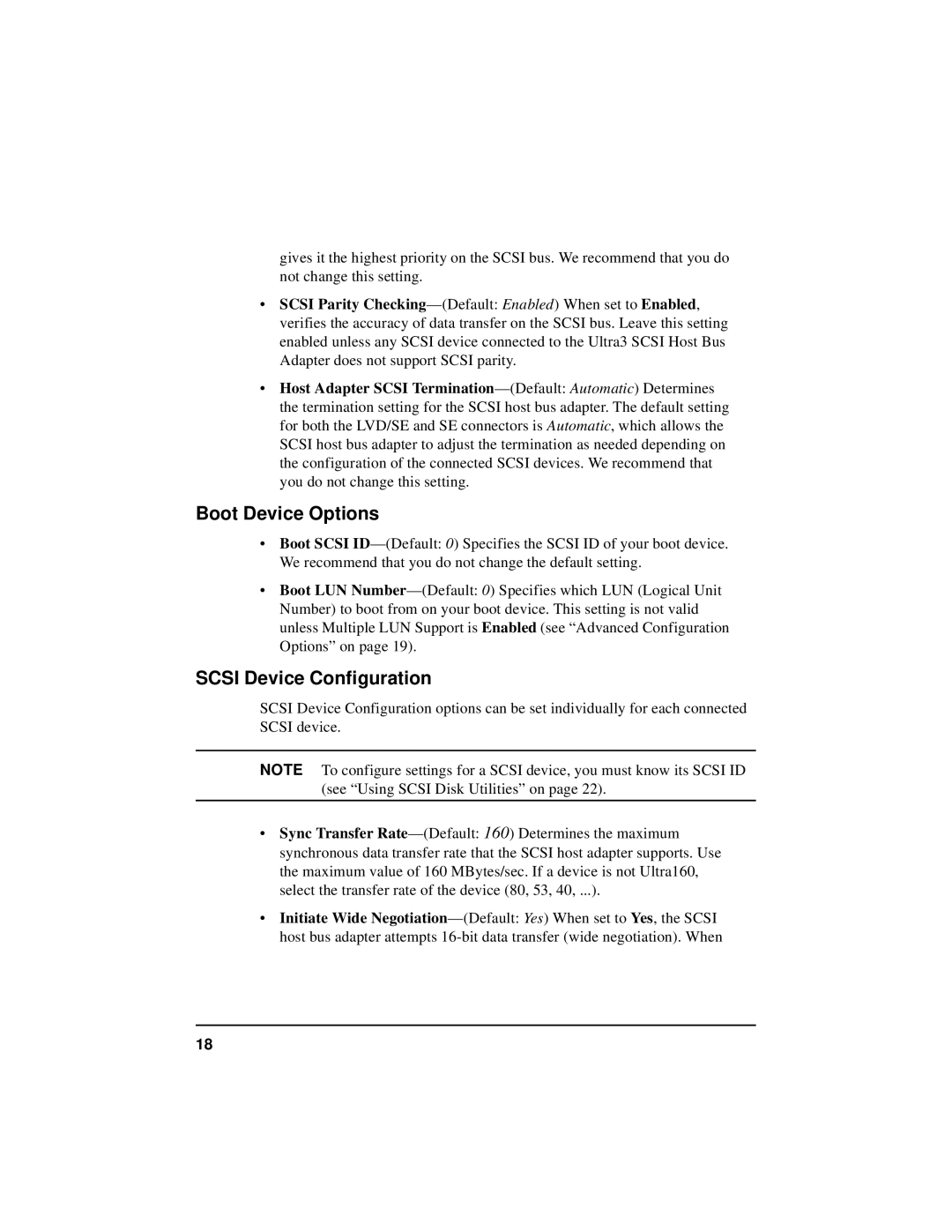
gives it the highest priority on the SCSI bus. We recommend that you do not change this setting.
•SCSI Parity
•Host Adapter SCSI
Boot Device Options
•Boot SCSI
•Boot LUN
SCSI Device Configuration
SCSI Device Configuration options can be set individually for each connected SCSI device.
NOTE To configure settings for a SCSI device, you must know its SCSI ID (see “Using SCSI Disk Utilities” on page 22).
•Sync Transfer
•Initiate Wide
18
